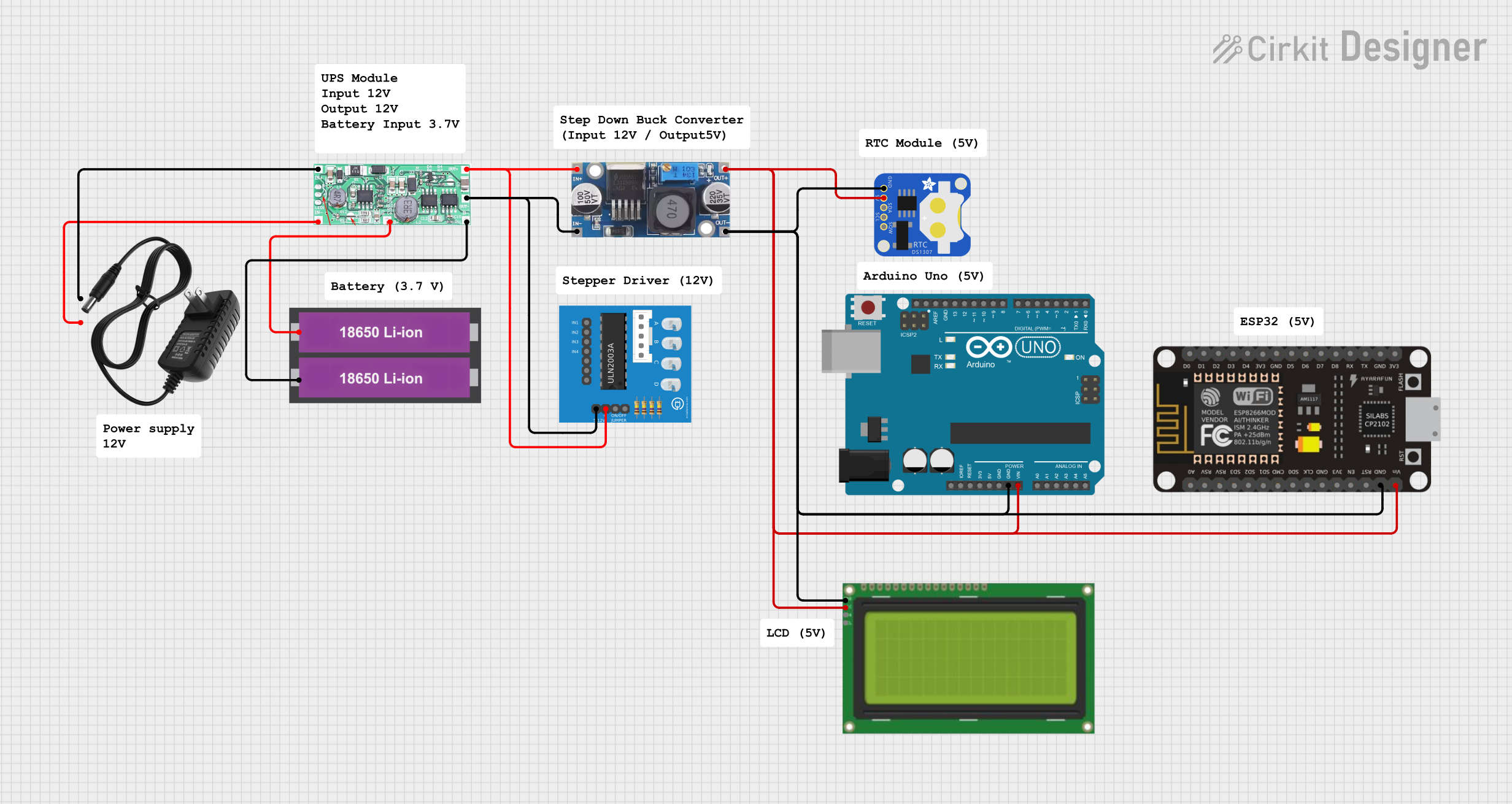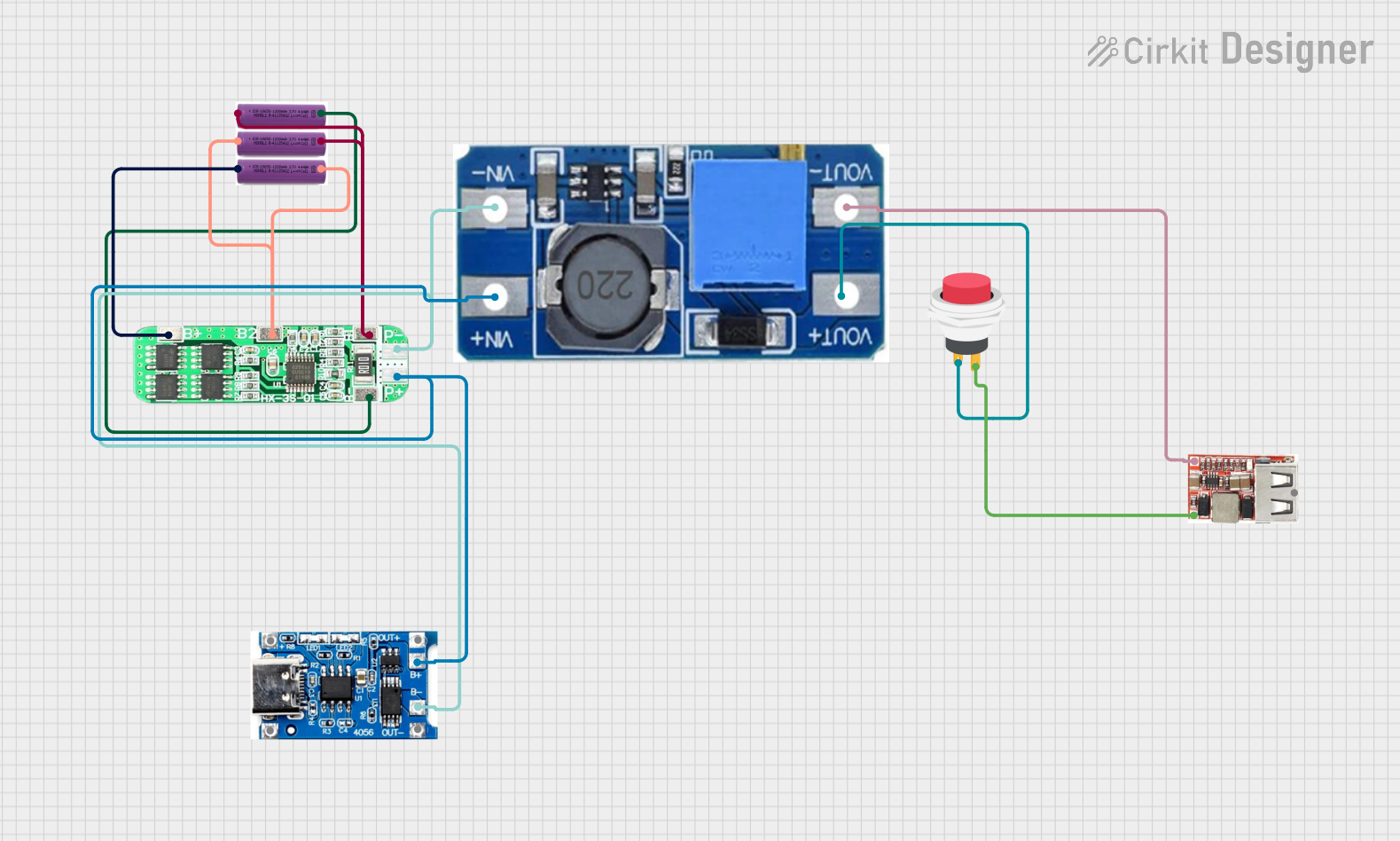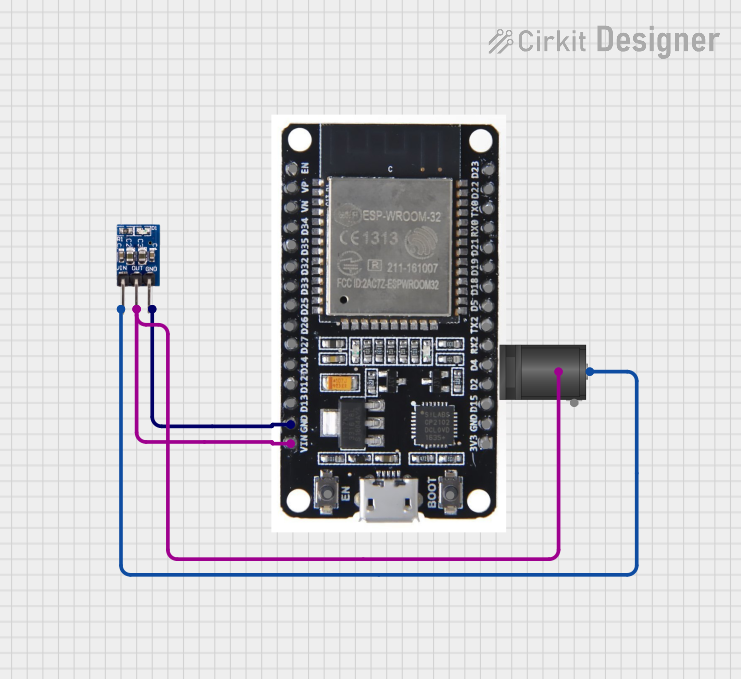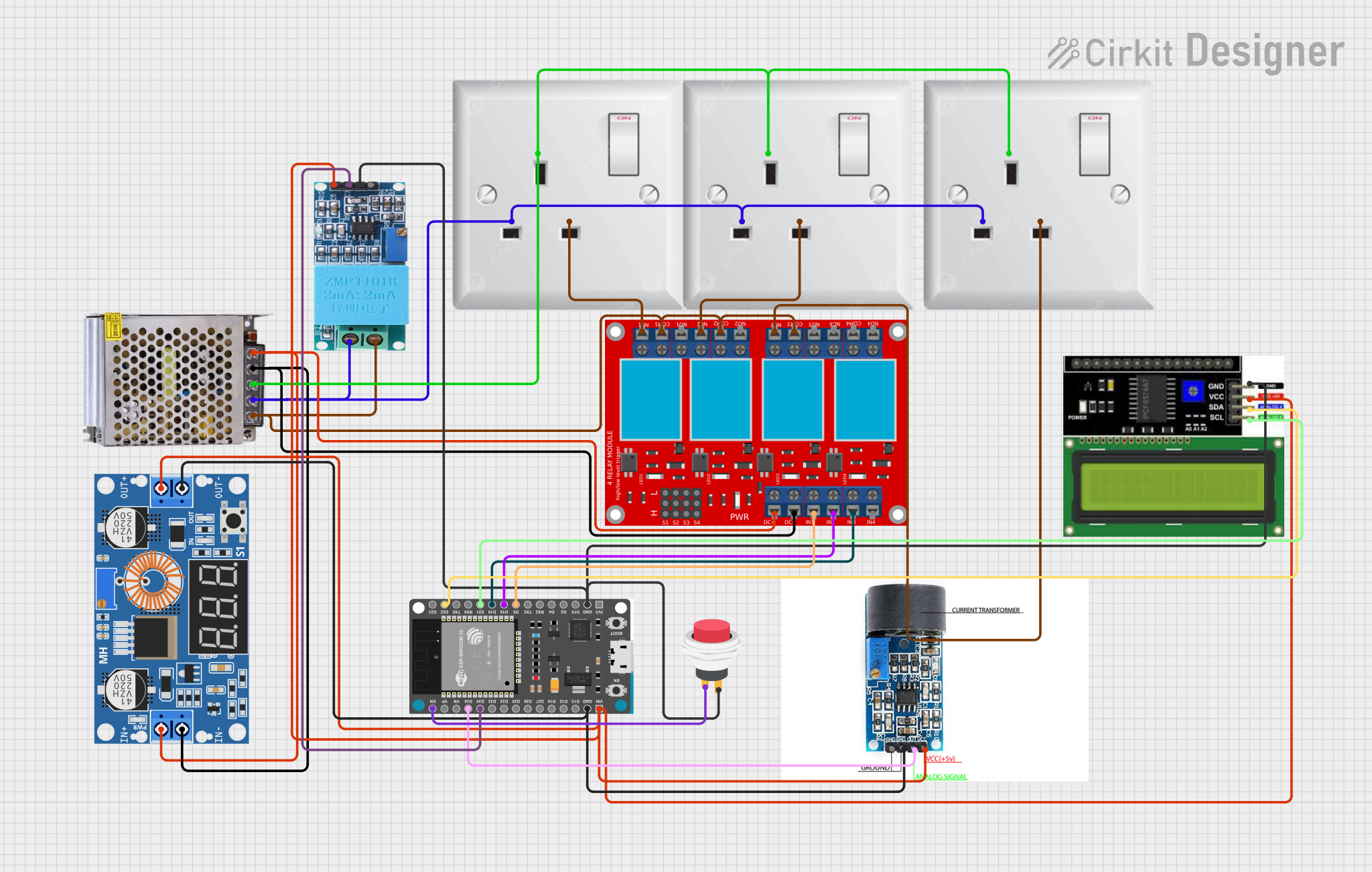
How to Use AMS1117 5V-3.3V Step Down: Examples, Pinouts, and Specs

 Design with AMS1117 5V-3.3V Step Down in Cirkit Designer
Design with AMS1117 5V-3.3V Step Down in Cirkit DesignerIntroduction
The AMS1117 5V-3.3V Step Down is a low-dropout (LDO) voltage regulator designed to convert a 5V input into a stable 3.3V output. This component is widely used in electronic circuits to power low-voltage devices such as microcontrollers, sensors, and communication modules. Its compact design and reliable performance make it a popular choice for both hobbyists and professionals.
Explore Projects Built with AMS1117 5V-3.3V Step Down

 Open Project in Cirkit Designer
Open Project in Cirkit Designer
 Open Project in Cirkit Designer
Open Project in Cirkit Designer
 Open Project in Cirkit Designer
Open Project in Cirkit Designer
 Open Project in Cirkit Designer
Open Project in Cirkit DesignerExplore Projects Built with AMS1117 5V-3.3V Step Down

 Open Project in Cirkit Designer
Open Project in Cirkit Designer
 Open Project in Cirkit Designer
Open Project in Cirkit Designer
 Open Project in Cirkit Designer
Open Project in Cirkit Designer
 Open Project in Cirkit Designer
Open Project in Cirkit DesignerCommon Applications and Use Cases
- Powering 3.3V microcontrollers (e.g., ESP8266, ESP32)
- Supplying stable voltage to sensors and modules
- Voltage regulation in battery-powered devices
- Prototyping and breadboard projects
Technical Specifications
The AMS1117 5V-3.3V Step Down regulator is designed for efficient and stable voltage conversion. Below are its key technical details:
| Parameter | Value |
|---|---|
| Input Voltage Range | 4.5V to 15V |
| Output Voltage | 3.3V |
| Output Current | Up to 1A |
| Dropout Voltage | 1.1V (typical at 1A load) |
| Quiescent Current | 5mA (typical) |
| Operating Temperature | -40°C to +125°C |
| Package Type | SOT-223, TO-252 |
Pin Configuration and Descriptions
The AMS1117 has three pins, as described in the table below:
| Pin Number | Pin Name | Description |
|---|---|---|
| 1 | GND | Ground pin. Connect to the circuit's ground. |
| 2 | VOUT | Regulated 3.3V output. Connect to the load. |
| 3 | VIN | Input voltage. Connect to a 5V power source. |
Usage Instructions
How to Use the AMS1117 in a Circuit
Connect the Input Voltage (VIN):
Provide a stable input voltage between 4.5V and 15V to the VIN pin. For a 5V to 3.3V conversion, connect a 5V power source to this pin.Connect the Ground (GND):
Connect the GND pin to the ground of your circuit.Connect the Output Voltage (VOUT):
The VOUT pin provides a stable 3.3V output. Connect this pin to the device or circuit requiring 3.3V.Add Decoupling Capacitors:
To ensure stable operation, place a 10µF capacitor between VIN and GND, and another 10µF capacitor between VOUT and GND. These capacitors help filter noise and improve stability.
Important Considerations and Best Practices
- Heat Dissipation: The AMS1117 can generate heat during operation, especially at higher input voltages and loads. Use a heatsink or ensure proper ventilation if the regulator gets too hot.
- Input Voltage Range: Ensure the input voltage is at least 1.1V higher than the output voltage (dropout voltage) for proper regulation.
- Current Limitations: Do not exceed the maximum output current of 1A to avoid damaging the regulator.
- PCB Layout: Keep the input and output capacitors as close as possible to the regulator pins to minimize noise and improve performance.
Example: Using AMS1117 with Arduino UNO
The AMS1117 can be used to power 3.3V devices in Arduino projects. Below is an example of connecting the AMS1117 to an ESP8266 module:
Circuit Connections
- Connect the 5V output from the Arduino UNO to the VIN pin of the AMS1117.
- Connect the GND pin of the AMS1117 to the Arduino's GND.
- Connect the VOUT pin of the AMS1117 to the 3.3V input of the ESP8266.
Sample Code for Arduino UNO
// Example code to communicate with an ESP8266 module powered by AMS1117
#include <SoftwareSerial.h>
// Define RX and TX pins for SoftwareSerial
SoftwareSerial esp8266(2, 3); // RX = pin 2, TX = pin 3
void setup() {
Serial.begin(9600); // Start Serial Monitor at 9600 baud
esp8266.begin(9600); // Start ESP8266 communication at 9600 baud
Serial.println("Initializing ESP8266...");
esp8266.println("AT"); // Send AT command to check communication
delay(1000); // Wait for response
while (esp8266.available()) {
Serial.write(esp8266.read()); // Print ESP8266 response to Serial Monitor
}
}
void loop() {
// Add your main code here
}
Troubleshooting and FAQs
Common Issues and Solutions
Output Voltage is Incorrect (Not 3.3V):
- Cause: Insufficient input voltage or missing decoupling capacitors.
- Solution: Ensure the input voltage is at least 4.5V and add 10µF capacitors to VIN and VOUT.
Regulator Overheats:
- Cause: High input voltage or excessive load current.
- Solution: Use a heatsink or reduce the load current. Ensure the input voltage is within the recommended range.
No Output Voltage:
- Cause: Incorrect wiring or damaged component.
- Solution: Double-check the connections and replace the AMS1117 if necessary.
Noise or Instability in Output Voltage:
- Cause: Missing or improperly placed capacitors.
- Solution: Place the capacitors as close as possible to the regulator pins.
FAQs
Q: Can I use the AMS1117 to power a 3.3V microcontroller directly?
A: Yes, the AMS1117 is suitable for powering 3.3V microcontrollers, provided the current requirement does not exceed 1A.
Q: What happens if the input voltage drops below 4.5V?
A: The AMS1117 may fail to regulate the output voltage properly, leading to instability or a lower-than-expected output voltage.
Q: Can I use the AMS1117 without capacitors?
A: It is not recommended. Decoupling capacitors are essential for stable operation and noise filtering.
Q: Is the AMS1117 suitable for battery-powered applications?
A: Yes, but ensure the battery voltage remains within the input voltage range of the AMS1117.